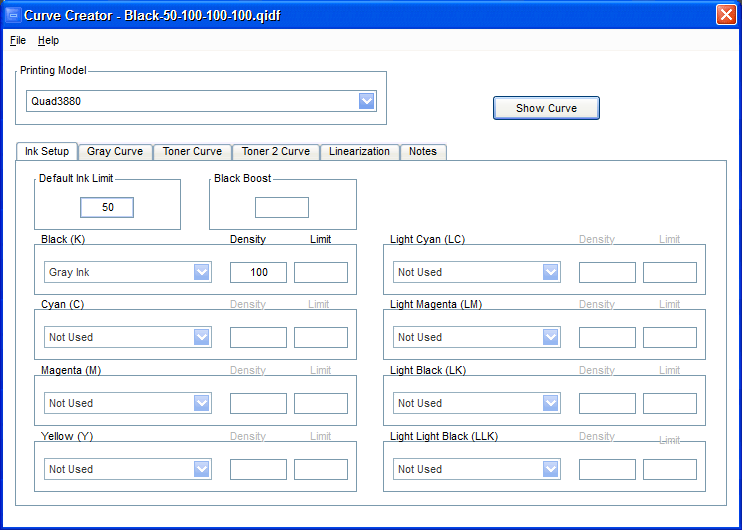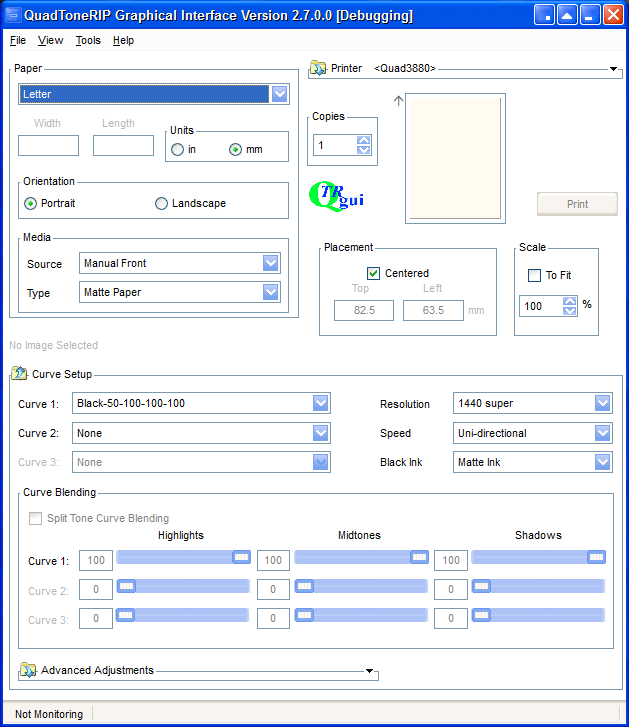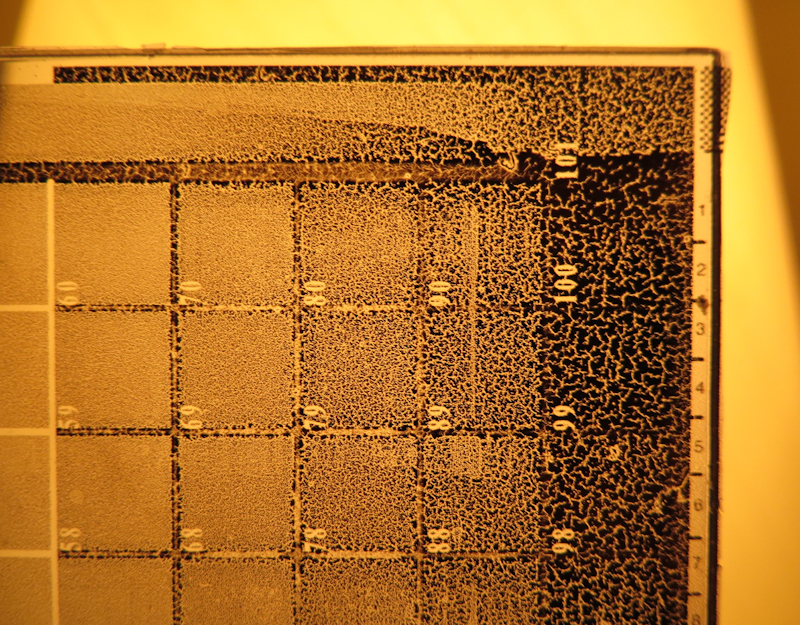While sorting out my ImagOn plate carrier design, I have been working on calibrating QuadToneRIP for printing directly to ImagOn.
My earlier experiments were based on a custom curve that used only black ink. This initial curve was very basic, adjusting only the Ink Setup. I made no changes to the Gray Curve, Toner Curve , Toner Curve 2, and Linearization tabs.
When printing I used the following settings:
- Source: Manual Front
- Type: Matte Paper
- Curve 1: Black-50-100-100-100 (my .qidf file from above)
- Resolution: 1440 Super
- Speed: Uni-directional
- Black Ink: Matte Ink
With these settings, I was able to print decent gradients, but I knew that my darkest steps were too dense. My plan for calibrating QTR is to first determine a Default Ink Limit value that will dither black portions of the image to the lowest dot density that yields a solid black in final the intaglio print. With this value nailed, I can then print out a step wedge to help me linearize the output.
The picture below shows an unexposed plate that has just been printed with a 100-step wedge. The colors are skewed because the photo was taken under weak incandescent light to avoid exposing the plate. Clearly steps above 70 have too much ink. There is so much ink, in fact, that the individual dots are pooling together. Steps up to 60 look pretty good, and I would need greater magnification to judge the steps between 60 and 70. Even if these steps are well printed, they may still be too dense to prevent an open bite.
This experiment may look like a failure, but it is actually a success. Once I print this plate, I will be able to determine the first step that gives me solid black in the intaglio print and then I will use this knowledge to set a Default Ink Limit so that the darkest portions of the image never generate a dither pattern denser than the ideal first black step.



